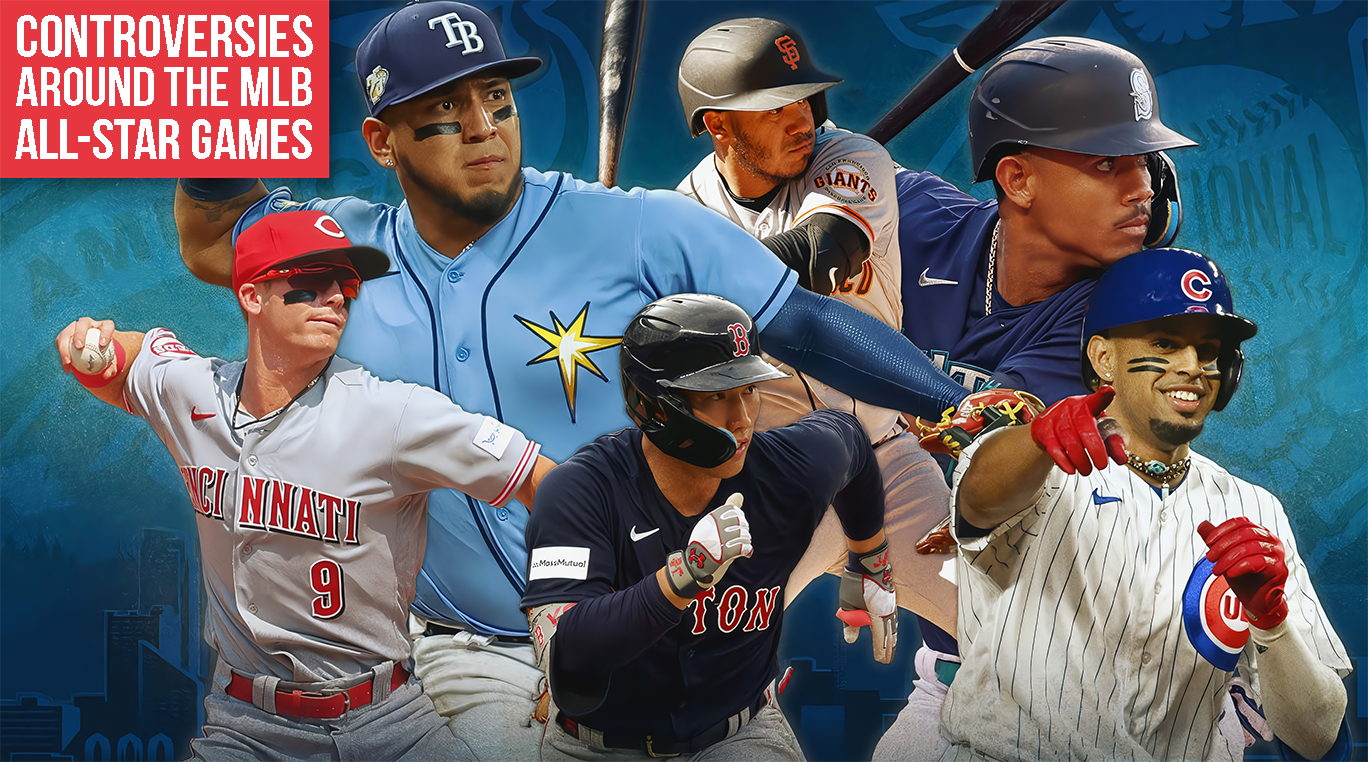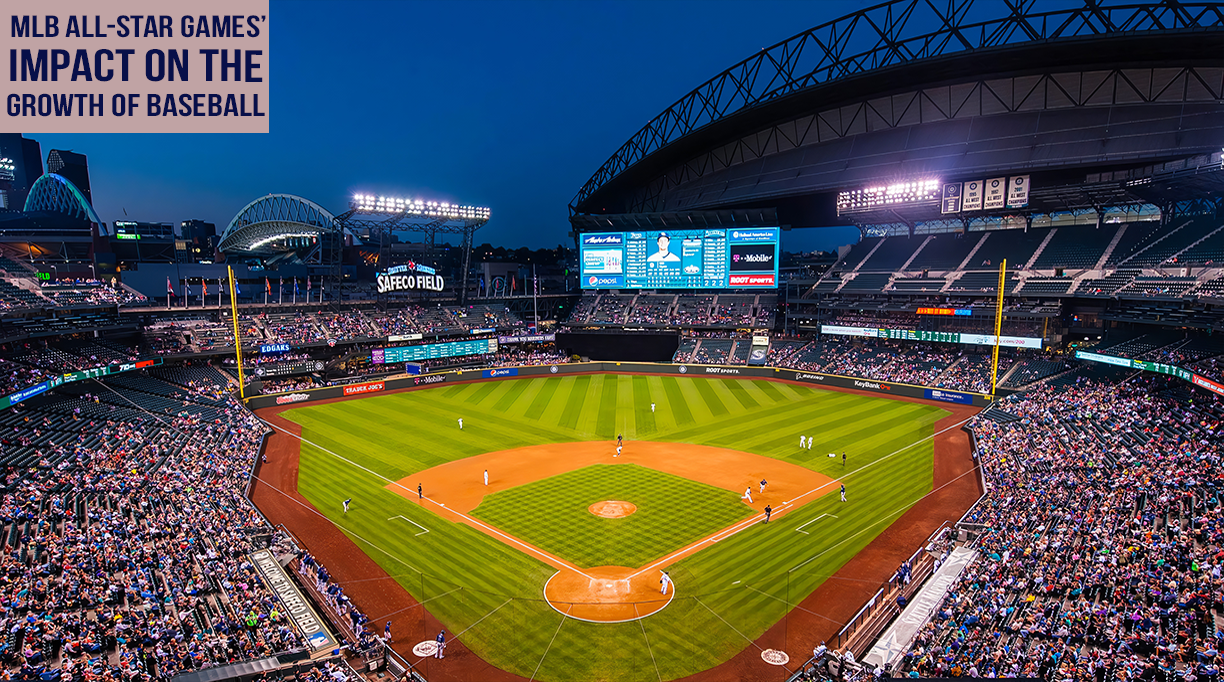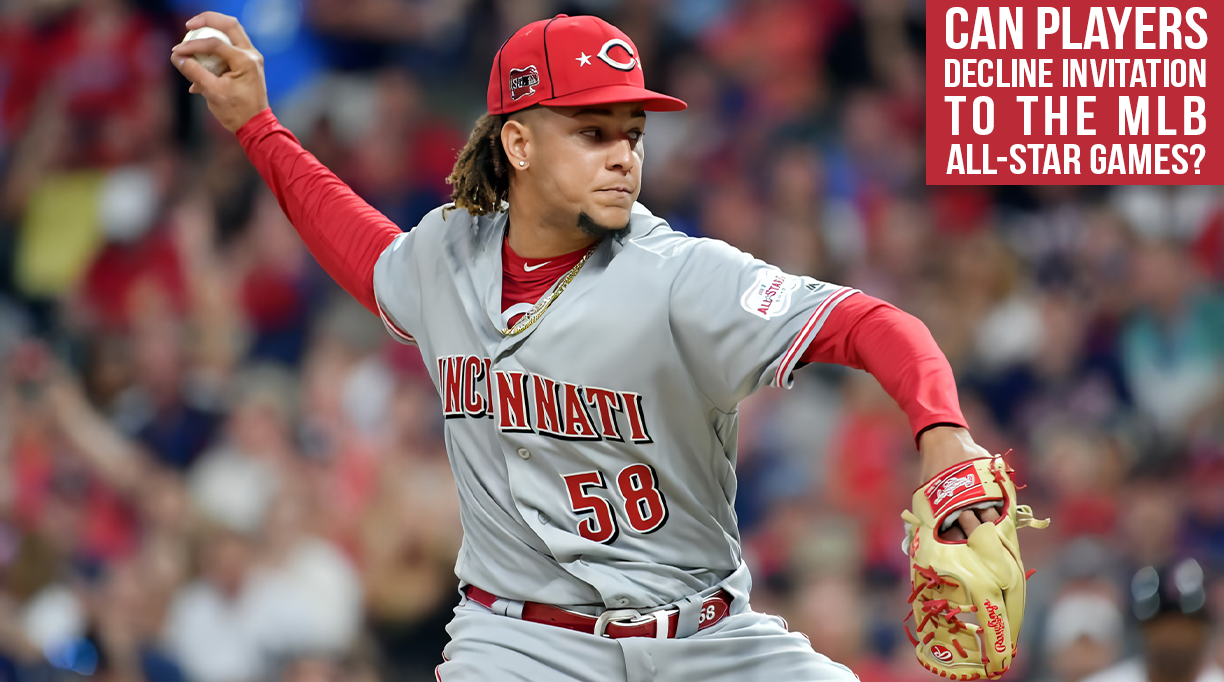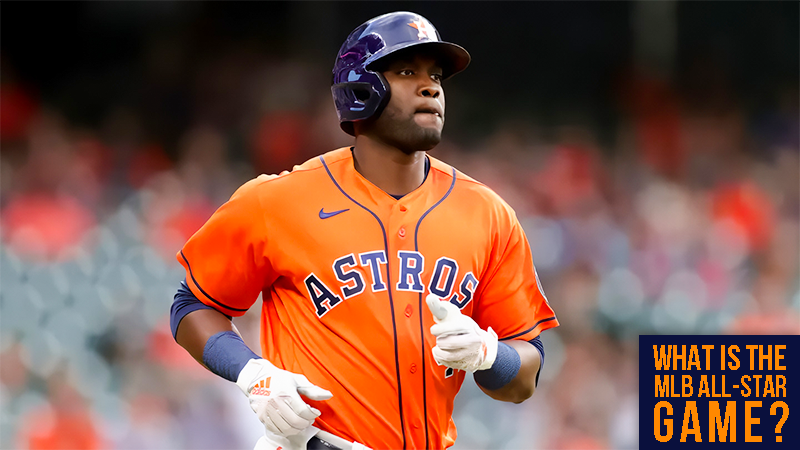Your Cart is Empty
- Gift for Family ⭐
- Handbag 🔥
-
Pet
-
Memorial
-
Products
-
Home & Garden
-
Accessories
- Happy Customers ❤️
What are some controversies surrounding the MLB All-Star Game selection process?
July 19, 2023 7 min read

The MLB All-Star Game is an annual extravaganza that brings together the best baseball players from the American League (AL) and the National League (NL) to showcase their skills and entertain fans worldwide. However, amidst the excitement and anticipation, the selection process for this prestigious event has not been immune to controversies and heated debates. In this article, we dive into the heart of the matter, exploring the controversies surrounding the MLB All-Star Game selection process. What are some controversies surrounding the MLB All-Star Game selection process? Let's find out.
Contents
1. Fan Voting Frenzy: Democracy or Distortion? 2. Potential Reforms: Striving for a Fair Game 3. The Role of Analytics: Data-Driven Selection or Traditional Approach? 4. The Influence of Public Perception: Media, Bias, and Controversy 5. Conclusion: Navigating Controversies and Striving for Fairness in the MLB All-Star Game Selection

1. Fan Voting Frenzy: Democracy or Distortion?
When it comes to the MLB All-Star Game, fan voting plays a pivotal role in determining the starting lineups for both teams. On the surface, this seems like an excellent way to engage fans and give them a voice in the selection process. However, it has not been without its fair share of controversies.
- The Popularity Contest Dilemma: MLB All-Star Game selection process is often criticized for being a popularity contest, favoring well-known players over deserving candidates. Avid fans are known to mobilize and rally behind their favorite players, regardless of their actual performance during the season. This raises concerns about the integrity of the selection process and whether it truly represents the best talent in the league.
-
Small Market Struggles: Players from small-market teams often find it challenging to garner enough votes compared to their counterparts from major cities. Limited exposure and smaller fan bases can put them at a disadvantage, making it harder to compete with players from more prominent teams.
Consequently, many deserving players from smaller market teams are left in the shadows, missing out on their well-earned All-Star recognition. - Snubs and Surprises:The MLB All-Star Game selection process goes beyond fan voting, with managers and players having a say in the final roster. While this approach aims to ensure fairness and balance, it has not been immune to controversies either.
- Managerial Biases: The responsibility of selecting reserves and pitchers lies with the MLB All-Star Game managers. It is not uncommon for managers to favor players from their own teams, leading to accusations of bias and unfairness. Critics argue that this compromises the integrity of the selection process and potentially excludes deserving players from rival teams.
- Player Participation and Rest Considerations: Some players who are deserving of an All-Star spot may opt out due to injury concerns or the need for rest during the midseason break. While understandable, these decisions can be disappointing for fans and raise questions about the overall credibility of the roster. Furthermore, players who are selected but decide not to participate may give rise to debates over whether they should have been chosen in the first place.

MLB All-Star Game Ballot this year
2. Potential Reforms: Striving for a Fair Game
Given the controversies surrounding the MLB All-Star Game selection process, discussions have emerged regarding potential reforms to enhance fairness and accuracy. Here are a few proposals that have gained traction:
- Weighted Voting System: To address the issue of fan voting favoring popularity over merit, implementing a weighted voting system has been suggested. This system would assign different weights to votes based on various factors, such as player performance, team record, and unbiased statistical analysis. By incorporating objective criteria, the selection process could become more balanced, reducing the impact of popularity biases.
- Managerial Accountability: To minimize accusations of managerial biases, some propose a system where the selection of reserves and pitchers is carried out collectively by the managers. This approach would involve managers discussing and deliberating the merits of potential All-Stars from each team, aiming for a more impartial decision-making process.
- Expanded Roster Size: Increasing the roster size for the MLB All-Star Game could provide a solution to include more deserving players, particularly from smaller market teams. With a larger roster, managers would have greater flexibility in choosing players and accommodating a broader range of talents. This expansion could lead to a more inclusive and representative All-Star Game, satisfying fans and players alike.
In conclusion, the MLB All-Star Game selection process has encountered its fair share of controversies and debates over the years. The fan voting frenzy has sparked discussions about the role of popularity and small-market struggles, while managerial biases and player participation considerations have also come under scrutiny.
However, through potential reforms such as a weighted voting system, managerial accountability, and expanded roster size, the MLB All-Star Game selection process can strive towards a fair and balanced representation of the league's best talents. So, what are some controversies surrounding the MLB All-Star Game selection process? These controversies pave the way for improvements, ensuring that the Midsummer Classic remains a thrilling and celebrated event in the world of baseball.

The 2023 MLB All-Star Game Ballot
3. The Role of Analytics: Data-Driven Selection or Traditional Approach?
In the ever-evolving landscape of baseball, the integration of analytics has become increasingly prevalent. This shift has inevitably influenced the MLB All-Star Game selection process, prompting discussions on the balance between data-driven decision-making and traditional evaluation methods.
- The Rise of Advanced Metrics: Advanced metrics, such as Wins Above Replacement (WAR), Fielding Independent Pitching (FIP), and Weighted Runs Created Plus (wRC+), have gained prominence in evaluating player performance. Advocates argue that incorporating these metrics into the selection process would ensure a more accurate representation of a player's value and impact on the game. However, critics caution against solely relying on advanced metrics, as they may not capture certain intangible qualities and nuances of the game.
-
Traditional Evaluation Factors: Traditional evaluation factors, including batting average, home runs, runs batted in (RBIs), and earned run average (ERA), have long been used to assess players' contributions.
Supporters of the traditional approach argue that these stats have stood the test of time and provide a well-rounded perspective on player performance.
They contend that statistics should not solely determine All-Star Game selections, as intangibles such as leadership, popularity, and clutch performances should also be considered. -
Striking a Balance: Finding the right balance between analytics and traditional evaluation methods remains a contentious topic.
Some propose a hybrid approach, where both advanced metrics and traditional statistics are taken into account when making All-Star Game selections. By combining objective data with subjective factors, the selection process can encompass a broader range of player qualities, creating a more comprehensive evaluation system.
In the ongoing debates surrounding the role of analytics, the MLB All-Star Game selection process finds itself at a crossroads. While data-driven decision-making can provide valuable insights into player performance, it should not overshadow the rich tapestry of traditional evaluation methods. Ultimately, striking a balance between analytics and traditional approaches can ensure that the MLB All-Star Game roster represents the best of both worlds—numbers-backed excellence and the intangible qualities that make baseball a captivating sport.

The 2023 MLB All-Star Game Ballot
4. The Influence of Public Perception: Media, Bias, and Controversy
When it comes to the MLB All-Star Game selection process, the role of public perception, media coverage, and potential biases cannot be overlooked. The way players are portrayed in the public eye can greatly impact their chances of making the All-Star roster, leading to controversies and heated discussions.
- Media Influence and Narrative Building: The media wields considerable influence in shaping public perception of players and their performances in the MLB All-Star Game selection process. Media outlets, such as sports networks, newspapers, and online platforms, play a pivotal role in creating narratives around players. Positive or negative media coverage can significantly impact a player's All-Star chances. When players receive extensive media attention, it can sway fan voting and even influence managerial decisions. Players who consistently feature in highlight reels, receive praise from analysts, or are the subject of compelling stories often find themselves in the spotlight, which can enhance their chances of making the All-Star roster. On the flip side, players who receive limited media coverage, especially those from smaller market teams, may struggle to garner the recognition and support needed to secure an All-Star spot, despite their on-field performance.
- Bias and Favoritism: Accusations of bias and favoritism have been raised in relation to both fan voting and media coverage in the MLB All-Star Game selection process. Fan voting can be susceptible to biases, with passionate fans often rallying behind popular players regardless of their actual performance. Media coverage can also be influenced by biases, with players from high-profile markets or successful teams receiving more attention and positive coverage compared to players from smaller market teams or struggling franchises. These biases can impact the public perception of a player's performance, potentially skewing the voting results and affecting their chances of making the All-Star roster. The presence of bias and favoritism undermines the fairness and integrity of the selection process, raising concerns about whether it truly represents the best talent in the league.
- Controversial Selections: Controversial selections in the MLB All-Star Game have been a source of discussion and debate among fans and experts. In some instances, a player's inclusion in the MLB All-Star Game roster may be met with surprise or skepticism. Controversial selections often occur when a player with below-average statistics but a strong public following is chosen based on popularity rather than performance. These selections can create controversy and lead to debates about the fairness and credibility of the selection process. When controversial selections take place, it raises questions about the influence of public perception, media bias, and the overall integrity of the MLB All-Star Game selection process.
Navigating the complex landscape of public perception, media influence, and potential biases is no easy task for the MLB All-Star Game selection process. The way players are portrayed and discussed in the public sphere can greatly impact their chances of making the roster, sometimes leading to controversial selections that stir debate among fans and experts alike.

The 2023 MLB All-Star Game Ballot
5. Conclusion: Navigating Controversies and Striving for Fairness in the MLB All-Star Game Selection
The MLB All-Star Game selection process is not without controversies. Fan voting, media influence, biases, and public perception all play a significant role. Challenges such as the popularity contest, small-market struggles, managerial biases, player participation, and the influence of analytics need to be addressed.
Reforms such as weighted voting, managerial accountability, and expanded rosters have been proposed to enhance fairness. The goal is to ensure a balanced representation of the best talents in the league.
While no process is perfect, ongoing discussions and potential reforms aim to navigate controversies and create a selection process that showcases excellence and captivates baseball fans worldwide.
Related products for Baseball Lovers:

Hazel Edison
Hazel Edison's mission as a content marketer and social media manager is to help businesses connect with their target audience through engaging and informative content. With a deep understanding of the power of digital media, Hazel is committed to helping the brand build its online presence and drive results.
Related articles in MLB Scores, Standings, Games, Playoffs & Latest News

The impact of the MLB All-Star Game on fan engagement and the growth of baseball
July 20, 2023 7 min read
Read More


